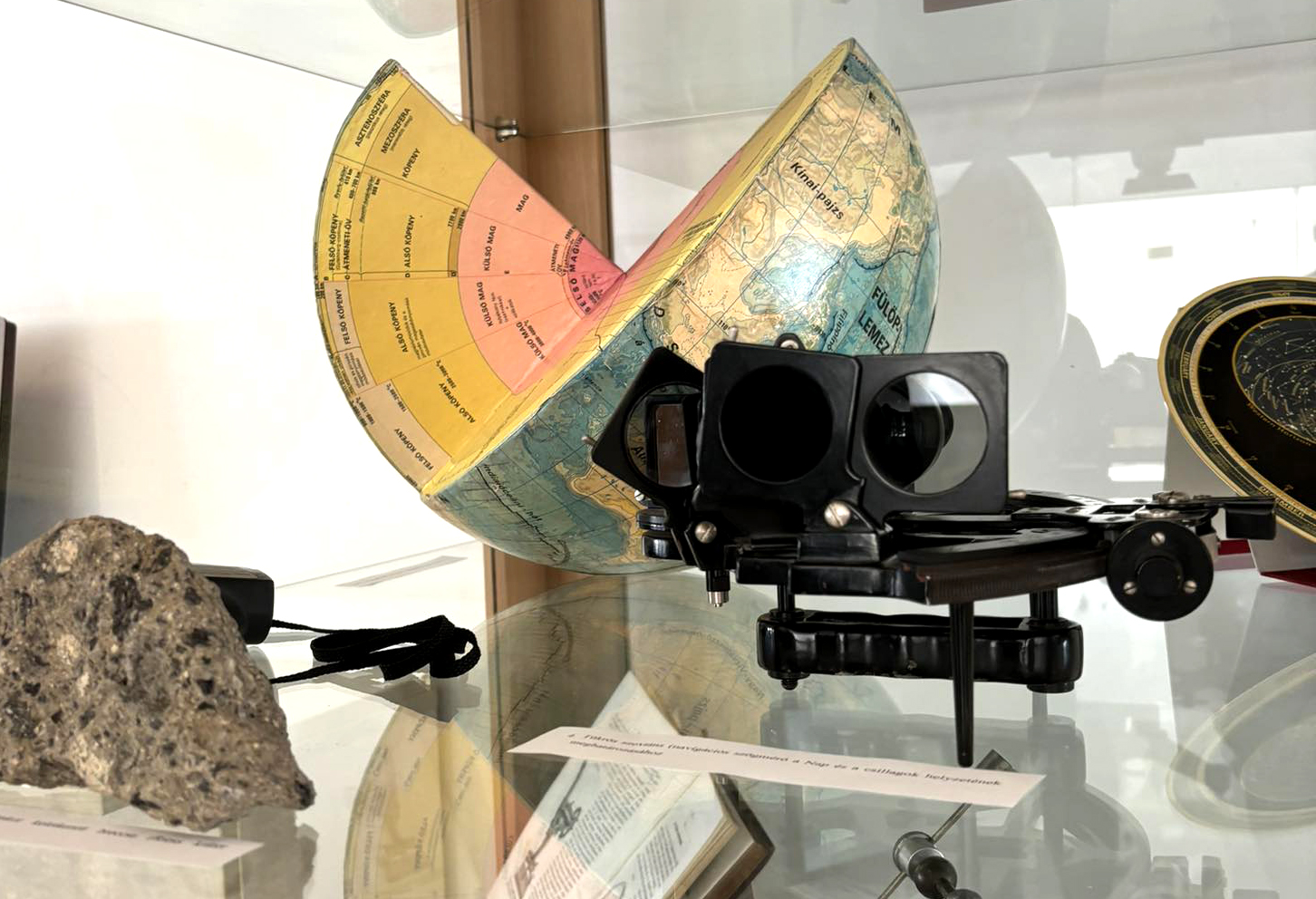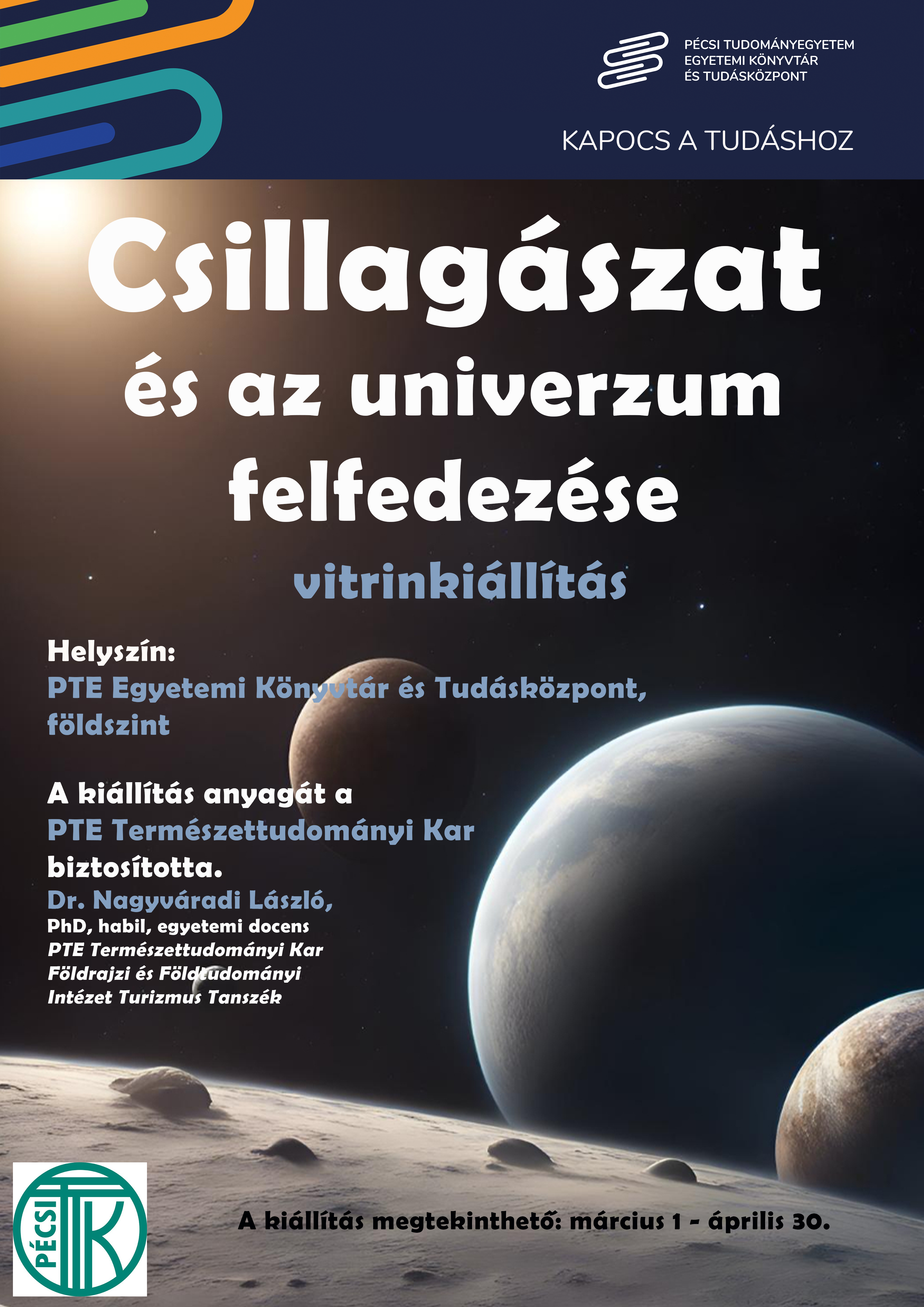Astronomy and the discovery of the universe.

"The launch and orbiting of the first Sputnik herald that human science knows no bounds in understanding, knows no limits in achievements, and, furthermore, provides evidence that the achievements of military technology can be put in the service of all humanity for peaceful purposes."
/Ernő Nagy (mechanical engineer, outstanding practitioner of astronautical literature), 1967/
In our exhibition, we aim to present astronomy, space exploration, and the theme of outer space to our visitors.
Space exploration brings new knowledge, discoveries, and developments into our daily lives. Astronauts orbiting our planet on the International Space Station live in extended freefall and microgravity. Through the astronauts residing there, scientists conduct groundbreaking research, test theories, and push the boundaries of our knowledge.
Around our planet orbits a natural satellite, the Moon, which is held in its orbit by the Earth's gravitational pull. The Moon is the only celestial body beyond Earth where humans have ever set foot.
When we look up at the night sky and gaze into the infinite depths of the universe, numerous questions may arise within us. Where is our place as Earth, humanity, and individuals in this infinity? Who are we? What is the universe like, in which the planet Earth revolves around the Sun? What might it feel like to be on a space station or to land on the Moon? What challenges does the human body face when venturing into space?
In our upcoming MyLib article, we will interview Dr. László Nagyváradi, associate professor at the Faculty of Sciences (University of Pécs), an astronomer, regarding all these topics.
Through the exhibition and the associated blog post, we aim to provide useful and interesting information to many, especially those interested in outer space.

The exhibition features unique items from the Geography and Earth Science Institute of the Faculty of Sciences, University of Pécs:
- Earth as a planet (internal structure, geological globe)
- Celestial globe with constellations and quadrants
- Tellurium (model illustrating the movements of the Sun, Earth, and Moon)
- Sextant (navigation instrument for determining the positions of the Sun and stars)
- Sun recorder (the glass globe collects sunlight and burns the paper strip behind it in sunny weather)
- Suevite meteorite breccia (formed during impact, Riess crater, Nördlingen, Germany) Lunar map
- Planisphere (rotatable sky map illustrating the visibility of celestial bodies)
- Copernicus memorial plaque (created on the 550th anniversary of the death of the creator of the solar system model, 1993)
- Gift from the Open University of Pécs, globe clock
- Astronomical telescope In addition to the items displayed in the showcase, special volumes from the Klimo Library are also on display.
Márton Varga: Presentation and explanation of the marvels of the starry sky and the movements of the Earth. Nagyvárad, Tichy J. T., 1809.
József Molnár: Popular astronomy. Praised work of the Hungarian Academy of Sciences. Pécs, Lyceum Press, 1865.
Galileo Galilei: Sidereus Nuncius, revealing great, far and admirable spectacles, to be looked at; presenting to everyone; Francof. in Paltheniano, [s.t.], 1610.
Dénes Inczédy: Elements of astronomy. For the upper classes of high schools and for private use. Pécs, Taizs J., 1888.
The exhibition can be viewed at:
Southern Transdanubian Regional Library and Knowledge Center, 0th floor, next to registration (Pécs, Universitas u. 2/A)
The exhibition was prepared by: Dr. László Nagyváradi, Eby Varghese Anna, Zsuzsanna Gergely, Johanna Kádár